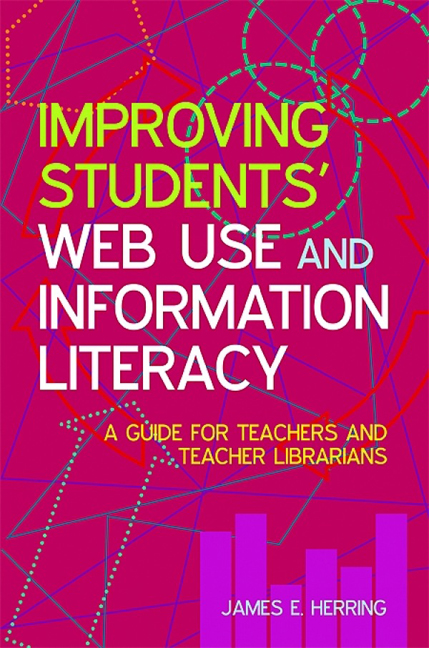Book contents
- Frontmatter
- Dedication
- Contents
- Acknowledgements
- Introduction
- 1 The big picture: learning and teaching in today's schools
- 2 Finding and using information on the web
- 3 Evaluating websites
- 4 Web 2.0 and schools
- 5 Information literacy
- 6 Improving student use of the web
- 7 Developing learning websites for student use - design and tools
- 8 Developing learning websites for student use - content
- 9 The next phase of ICT in schools
- Bibliography
- Index
8 - Developing learning websites for student use - content
Published online by Cambridge University Press: 08 June 2018
- Frontmatter
- Dedication
- Contents
- Acknowledgements
- Introduction
- 1 The big picture: learning and teaching in today's schools
- 2 Finding and using information on the web
- 3 Evaluating websites
- 4 Web 2.0 and schools
- 5 Information literacy
- 6 Improving student use of the web
- 7 Developing learning websites for student use - design and tools
- 8 Developing learning websites for student use - content
- 9 The next phase of ICT in schools
- Bibliography
- Index
Summary
Introduction
As was emphasized in Chapter 7, learning resources for students that are focused on the needs of particular groups of students studying curricular topics in schools are more likely to be seen by students as being designed specifically for them rather than for any students in general. Locally produced learning websites will motivate students more than general ones as the students will recognize not only the name of the school and their class on the website, but also the direct link between what they are learning in the classroom, or what assignment they are completing, and the content of the website. If students can be involved in the further development of a learning website, for example by adding web sources which they have found and evaluated, then this is also likely to motivate and engage students.
Deciding on the content of learning websites can be a challenge for teachers and teacher librarians. The content of learning websites needs to be guided by the needs of the student group for which the site is designed. Chapter 7 examined aspects of good design for learning websites, but a well designed site with content that does not match the needs of students, for example has an inappropriate level of language, will not be successful. In deciding on content, teachers and teacher librarians also need to consider differentiation, as student groups are likely to include a range of abilities and reading levels, particularly at the primary or elementary level and early secondary or high school level.
This chapter will focus on presenting subject content in learning websites, developing e-pathfinders, and enhancing student participation in wikis and blogs. The aim is to present a range of ideas for developing the content of learning websites and to provide examples which can be adapted by teachers and teacher librarians for their own schools.
Subject content
Including subject content in a learning website can give students an experience of online learning, which can be beneficial for students as online learning is likely to increase in the future. Teachers and teacher librarians planning a learning website have to decide what to include in the subject content part of the website.
- Type
- Chapter
- Information
- Improving Students' Web Use and Information LiteracyA Guide for Teachers and Teacher Librarians, pp. 109 - 126Publisher: FacetPrint publication year: 2010



